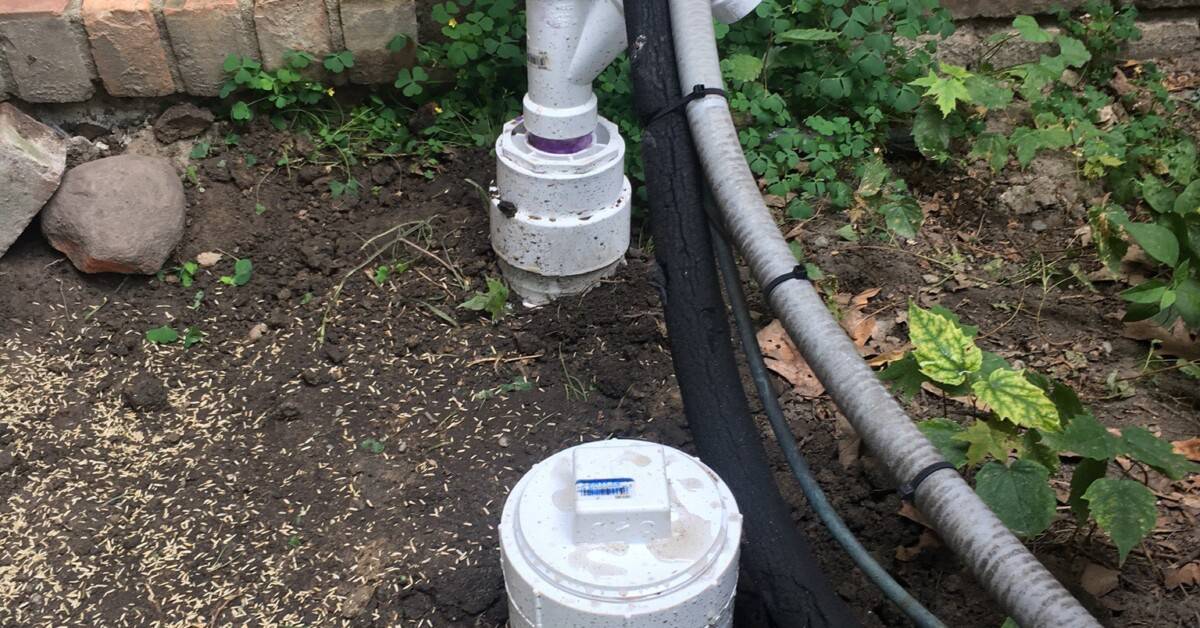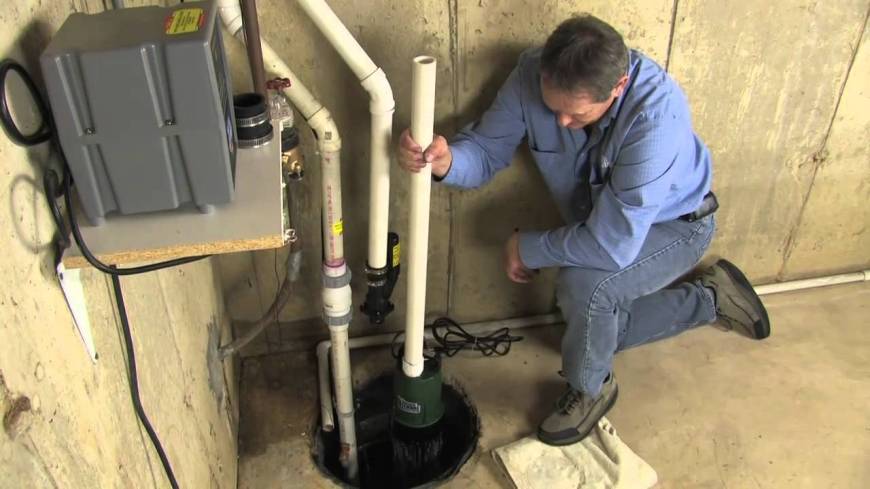Easy-to-Follow Tips for Maintaining Your Sump Pump
Easy-to-Follow Tips for Maintaining Your Sump Pump
Blog Article
Everyone maintains their personal rationale about Steps to Cleaning Your Sump Pump Properly.

Sump pumps are critical components in lots of homes, particularly in areas prone to flooding or extreme moisture. They aid protect against water damage by effectively getting rid of excess water from cellars or crawl spaces. However, like any other device, sump pumps require normal upkeep to guarantee they work efficiently when needed the most. Cleansing your sump pump is an essential part of its maintenance, and comprehending just how to do it correctly can save you from expensive fixings and prospective catastrophes.
Introduction
Keeping a clean sump pump is crucial for its proper functioning and durability. Disregarding this necessary task can bring about obstructions, malfunctions, and inevitably, water damages to your property. Therefore, finding out how to clean up a sump pump is essential for homeowners that count on these gadgets to maintain their cellars dry and secured.
Understanding the Sump Pump
Before diving right into the cleaning procedure, it's necessary to have a standard understanding of exactly how a sump pump functions. Usually set up in a pit or basin listed below the cellar flooring, a sump pump consists of a number of essential components, consisting of a pump, a float switch, and a discharge pipe. When water collects in the pit, the float button turns on the pump, which after that pumps the water out with the discharge pipeline, far from the structure's structure.
Indications of a Dirty Sump Pump
Understanding when your sump pump requires cleansing is important for stopping potential breakdowns. Some typical signs that show a dirty sump pump include odd noises during operation, reduced water circulation, and noticeable debris in the pit. If you see any of these signs, it's vital to clean your sump pump immediately to avoid any additional problems.
Getting ready for Cleansing
Prior to you start cleaning your sump pump, it's vital to take some safety and security preventative measures. Beginning by turning off the power to the pump to stay clear of any kind of electrical mishaps. Additionally, use suitable safety gear, such as handwear covers and goggles, to shield on your own from dust, debris, and prospective microorganisms.
Step-by-step Overview to Cleaning Up a Sump Pump
Shutting down the Power
Begin by detaching the power supply to the sump pump to stop any kind of crashes while cleansing.
Getting Rid Of Debris and Dirt
Utilize a bucket or a scoop to eliminate any type of noticeable debris, dirt, or sediment from the sump pit. Dispose of the particles appropriately to prevent it from blocking the pump or the discharge pipeline.
Cleansing the Pump and Float Switch Over
Once the pit is clear of particles, thoroughly eliminate the pump from the pit. Check the pump and the float button for any kind of indications of damages or wear. Make use of a soft brush or towel to clean up the surface areas and eliminate any gathered grime.
Purging the System
After cleaning up the pump and float button, flush the sump pit with clean water to get rid of any kind of continuing to be dirt or sediment. This will assist ensure that the pump runs efficiently and efficiently.
Looking For Appropriate Performance
Before re-installing the pump, perform a quick examination to guarantee that the float switch triggers the pump correctly. Pour some water right into the sump pit and observe the pump's operation. If everything is operating correctly, you can reconstruct the pump and reconnect the power supply.
Maintenance Tips to Keep Your Sump Pump Clean
Along with routine cleaning, there are a number of maintenance tips you can follow to maintain your sump pump in optimal condition:
Verdict
Cleansing your sump pump is a vital element of its upkeep and guarantees that it operates effectively when you require it one of the most. By following the actions detailed in this overview and including routine upkeep right into your regimen, you can expand the life-span of your sump pump and protect your home from water damages.
6 STEPS ON HOW TO CLEAN A SUMP PUMP PROPERLY
UNDERSTANDING SUMP PUMPS
Your sump pump plays a crucial role in protecting your home by managing and removing excess water. It primarily functions as a “shield”, guarding your basement against the damaging effects of water accumulation. The pump is housed in a sump pit in the lowest part of your basement, and its job is to pump out any water that collects there.
During heavy rainfalls or when snow melts rapidly, water can infiltrate your basement, posing potential risks like flooding, structural damage, and harmful mold growth. Here, the sump pump springs into action, pumping out the intruding water and directing it away from your home.
SAFETY FIRST
Before cleaning, remember to prioritize safety. Disconnect the sump pump from the power source to prevent any accidental electric shocks. Also, wear sturdy gloves to protect your hands from any sharp or dirty components within the pump.
REMOVE THE SUMP PUMP
After ensuring your safety, the next step is to remove the sump pump from its pit. Doing this might require careful maneuvering as you don’t want to damage any pump components. Once removed, clean the sump pit to remove any accumulated debris or sludge.
INSPECT THE PUMP
Inspect the pump for any visible signs of wear or damage. Check the power cord, float switch, and impeller housing. If any components look worn out or damaged, consider replacing them to ensure optimal performance.
CLEAN THE PUMP
Thoroughly clean the pump with warm, soapy water. Make sure to rid it of any dirt, gravel, or other debris that might impede its performance. You can use a toothbrush to clean the small, hard-to-reach parts of the pump.
REINSTALL THE SUMP PUMP
Reinstall the pump into the sump pit Make sure it’s positioned correctly to remove the water effectively Once it’s back in place, reconnect it to the power source TEST THE PUMP
Finally, pour some water into the pit to ensure the pump works correctly. It should start automatically and begin pumping out the water; if it doesn’t, check the power source and the positioning of the pump.
Remember, while cleaning your sump pump is an essential part of home maintenance, hiring a professional plumber for a thorough inspection and cleaning at least once a year is also important. This will ensure that your pump is in optimal condition, ready to protect your home from potential water damage.
BEST PRACTICES FOR CLEANING SUMP PUMP DISCHARGE PIPES
Regular Inspection: Regularly inspect your discharge pipes, especially during heavy rainfall or snowmelt periods. Look for any signs of blockage or damage. Early detection of problems can prevent serious issues down the line. Periodic Cleaning: Over time, sediment and debris can accumulate in the discharge pipes, impeding the flow of water. Regular cleaning helps keep the pipes clear and functioning efficiently. You can use a high-pressure water jet to effectively clean the pipes. Insulation During Winter: In colder climates, discharge pipes can freeze, blocking the outflow of water. Protect your discharge pipes from freezing temperatures by insulating them with foam pipe insulation. This will ensure the sump pump can continue to discharge water even in freezing conditions. Proper Positioning: The discharge pipe should be positioned to direct water away from your home’s foundation. Improper positioning can lead to water seeping back into the basement. Ensure the pipe is long enough and angled correctly. Installation of a Check Valve: A check valve prevents water from flowing back into your sump pit after the pump has pushed it out. Installing a check valve helps maintain the efficiency of your sump pump and reduces the risk of flooding. Minimize Pipe Turns: Every curve or turn in the discharge pipe can decrease the efficiency of water flow. By minimizing turns and bends in your discharge pipe, you can increase the efficiency of your sump pump. https://www.fullspeedplumbing.com/how-to-clean-a-sump-pump-properly9999/

We are very excited about Steps to Cleaning Your Sump Pump Properly and I am assuming you enjoyed reading the new page. Sharing is caring. Helping people is fun. Thanks a bunch for being here. Come back soon.
Article Report this page